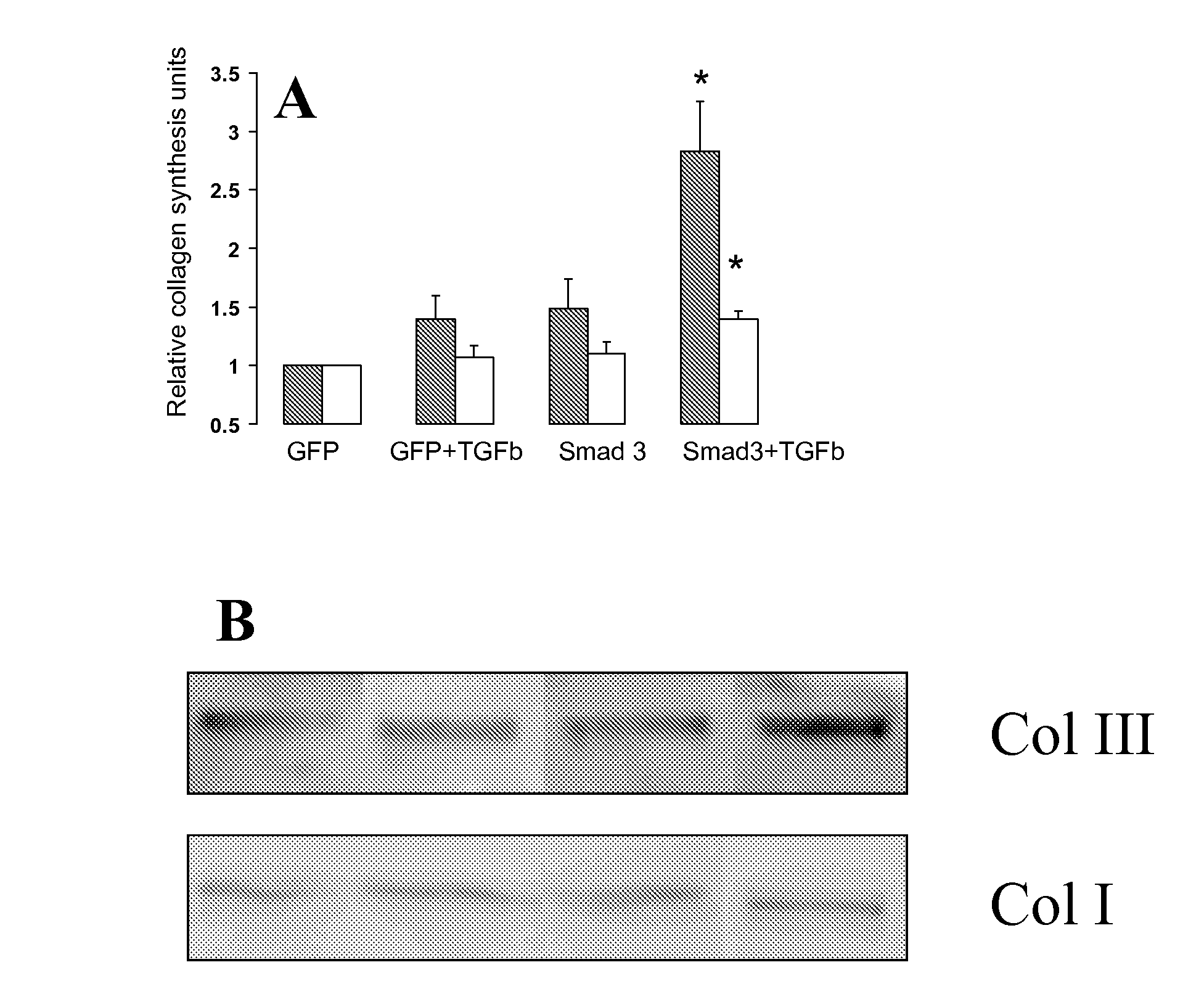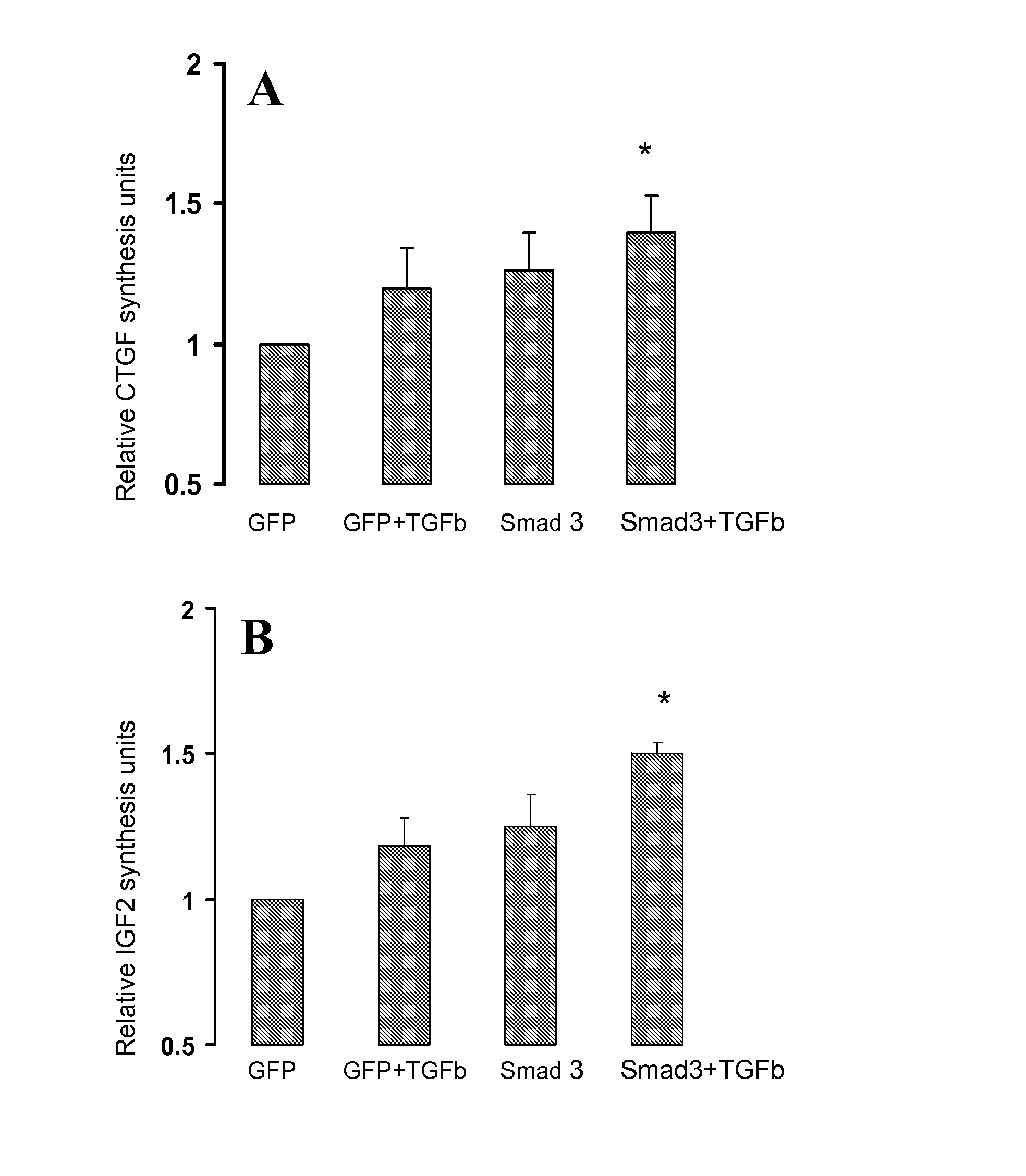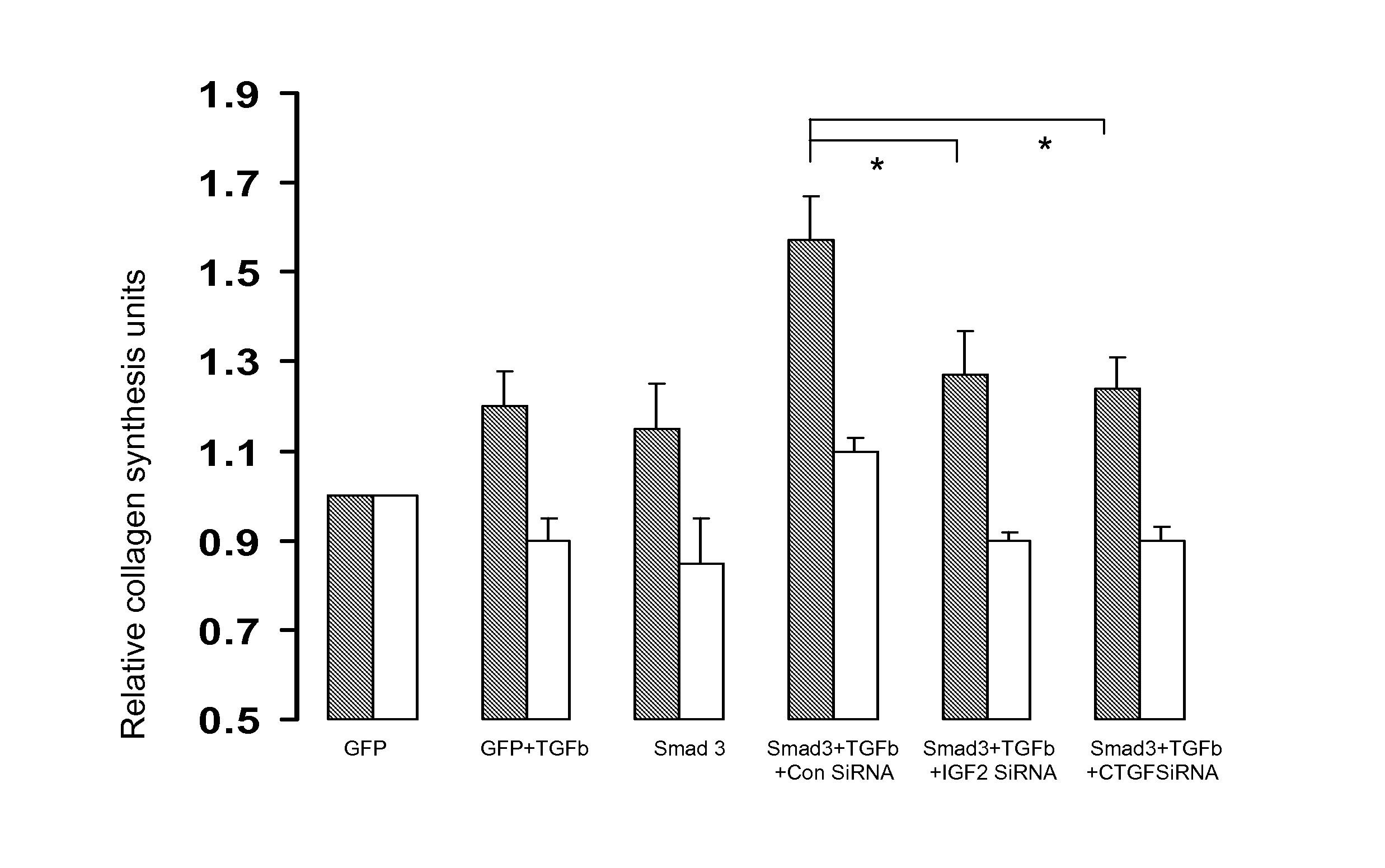Test of insulin as a drug to reduce restenosis of vessels
- Summary
- Abstract
- Description
- Claims
- Application Information
AI Technical Summary
Benefits of technology
Problems solved by technology
Method used
Image
Examples
example 1
Materials and Methods
[0039]Cell Culture. Aortic SMCs were isolated from mouse (MOVAS) aortas. Rat aortic fibroblasts were isolated as previously described by Pagano et al., Localization of a constitutively active, phagocyte-like NADPH oxidase in rabbit aortic adventitia: enhancement by angiotensin II, Proc. Natl. Acad. Sci. USA. Dec 23;94(26):14483-8 (1997), incorporated herein by reference as if set forth in its entirety, and used to visualize collagen secretion into growth media. These cells were transfected with green fluorescent protein (GFP) and SMAD3 adenoviral vectors expressing Smad3 (AdSmad3) and GFP (AdGFP), constructed as previously described in Ryer, E. et al., Arterioscler Thromb Vasc Biol. 26:780-786, 2006, incorporated herein by reference as if set forth in its entirety. Adenoviral vector expressing GFP was used as a control (AdGFP).
[0040]Immunoblotting analysis. Collagen produced by rat fibroblasts was measured using Western blotting. Conditioned medium (CM) obtained...
example 2
TGFbeta and Smad3 Stimulation Increases Production of Collagen III Relative to Collagen I in Rat Aortic Fibroblasts
[0049]Endogenous Smad3 expression is upregulated following injury (Tsai, Hollenbeck et al., 2009). Smad3 gene transfer can lead to increased total collagen synthesis and adaptive vessel remodeling (Kundi, Hollenbeck et al., 2009). However, increased collagen is also associated with constrictive remodeling (Kundi, Hollenbeck et al., 2009). In view of these conflicting reports, the inventors predicted that the relative difference in the form of collagen produced (i.e., type I relative to type III) might responsible for responses of vessel expansion / constriction following injury.
[0050]To stimulate collagen production by fibroblasts in vitro, Smad3-transfected SMCs were starved in 0.5% serum and then treated with TGF-beta (5 ng / ml) for 48 hours to generate TGF-beta-treated Smad3-transfected SMC CM. The CM obtained from this culture was then added to rat aortic fibroblasts. ...
example 3
TGFbeta / Smad3-Treatment Causes SMCs to Increase CTGF and IGF-2 Production
[0051]Medial SMCs can influence adventitial fibroblast behavior through a TGFbeta / Smad3 dependent soluble factor (Kundi et al., 2009). This factor might be CTGF, previously demonstrated to stimulate myofibroblast transformation, proliferation and collagen production (Blom et al. 2002; Kundi et al. 2009). CTGF has an Insulin-Like Growth Factor (IGF) domain. Further, the presence or absence of other growth factors such as IGF-2 determines the biological response of the target cell (Gore-Hyer, Pannu et al. 2003; Grotendorst, Rahmanie et al. 2004; Grotendorst and Duncan 2005).
[0052]CTGF and IGF-2 are present in the CM derived from SMCs that overexpress Smad3 (FIG. 2A and B respectively). Further, an mRNA expression array analysis conducted by the inventors showed an increase in CTGF and IGF-2 mRNA production by TGFbeta / Smad3-treated SMCs following 48 hours of treatment. IGF-2BP3 was found to be increased 2.8 and 2....
PUM
 Login to View More
Login to View More Abstract
Description
Claims
Application Information
 Login to View More
Login to View More - R&D
- Intellectual Property
- Life Sciences
- Materials
- Tech Scout
- Unparalleled Data Quality
- Higher Quality Content
- 60% Fewer Hallucinations
Browse by: Latest US Patents, China's latest patents, Technical Efficacy Thesaurus, Application Domain, Technology Topic, Popular Technical Reports.
© 2025 PatSnap. All rights reserved.Legal|Privacy policy|Modern Slavery Act Transparency Statement|Sitemap|About US| Contact US: help@patsnap.com



